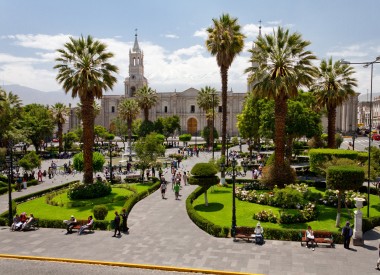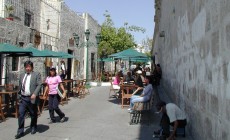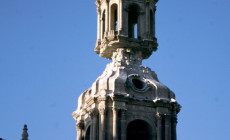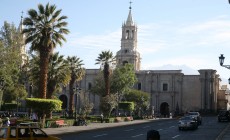-
Latin America
Latin America
- Countries (hidden space)
- Galapagos & Ecuador
- Guatemala
- Mexico
- Panama
- Peru
- Popular Attractions
- Machu Picchu
- Inca Trail
- Easter Island
- Galapagos Islands
- Patagonia
- Rio de Janeiro
- Iguazu Falls
-
Africa
Africa
- Spacer Africa
- South Africa
- Zimbabwe
- Popular Attractions
- Cape Town
- Okavango Delta
- Sossusvlei Dunes
- Victoria Falls
- The Kruger
- The Garden Route
- Masai Mara
-
Asia & Middle East
Asia & Middle East
- Asia
- Borneo (Malaysia)
- Cambodia
- India
- Japan
- Middle East
- Jordan
- Spacer Asia
- Laos
- Sri Lanka
- Uzbekistan
- Vietnam
- Popular Attractions
- Taj Mahal
- Lion Rock (Sigiriya)
- Angkor Wat
- Ha Long Bay
- Kyoto
- Petra
-
Destinations
- Latin America
- Argentina
- Bolivia
- Brazil
- Chile
- Colombia
- Costa Rica
- Galapagos & Ecuador
- Guatemala
- Mexico
- Panama
- Peru
- Asia
- Borneo (Malaysia)
- Cambodia
- India
- Japan
- Laos
- Sri Lanka
- Uzbekistan
- Vietnam
- Middle East
- Jordan
- Southern & East Africa
- Botswana
- Kenya
- Namibia
- South Africa
- Zimbabwe
- Contact Us
-
About
About
Llama Travel provides high quality holidays at the lowest possible prices.
99% recommend us Lower prices - guaranteed Financially protected by ATOL
Museo Santuarios Andinos
In September 1995, the archaeologist and anthropologist Dr. Johan Reinhard, along with Dr. Antonio Chávez of the Catholic University of Arequipa, discovered the tomb of a child atop of the 6,380m-high Volcano Ampato in the Colca Canyon. This girl, aged around 13 at the time of her death, was sacrificed and buried by the Incas as an appeasement offering to the Apus, the mountain gods. Although human sacrifice was rare in the Inca Empire, extreme cases, such as a severe drought, were interpreted as a sign of anger of the gods, and thus a more important sacrifice than the usual chicha or animals was required.
The child was from a noble family, as indicated by the garments she was wearing. She would have had to be a virgin to take part in such an important ceremony, and although she was undoubtedly frightened (other mummies discovered show signs of fear on their faces and in their positions) she would also have understood the importance of her role. She was not just being sacrificed, but also rather starting a journey towards the Apu gods and towards divinity herself. Her diet prior to the sacrifice was purely vegetarian to purify her, and she fasted and was given strong ritual chicha and coca leaves just before the sacrifice. She was actually killed by a blow to her head, although it is likely that she was unconscious at this time as a result of the drugs she had been given.
Although dozens of child sacrifices have been found throughout the Andes, almost always on the peak, or close to, of important mountains, the body found at the top of Ampato was particularly important. This child, given the name Juanita after her discoverer (Johan translates as Juan in Spanish), is one of the best-preserved bodies in existence, and so has provided much information on the ritual of Inca sacrifice. The tomb and body had been encased in ice for approximately 500 years until the eruption of the nearby Sabancay Volcano dislodged her, facilitating her discovery. Juanita is usually referred to as the Ice mummy, although in actual fact she was never mummified, with her preservation being a completely natural process brought about by the extreme temperatures at the top of such a high mountain. Many studies have been carried out on Juanita, both in Arequipa and at leading institutions in the US, and research is ongoing.
Further excavations at the top of Ampato uncovered three other child mummies of both sexes, and several other mummies have been discovered on other important Apus in the region, including on Misti and Picchu Picchu near Arequipa and on Sara Sara in the department of Ayacucho. These mummies are also being studied at the Catholic University in Arequipa, and are also sometimes displayed in the museum.
In addition to the bodies discovered in the tombs, many important artefacts were found. These include ceramics and gold, silver and copper statues of llamas and representations of the sacrifices themselves. The clothing of the children has also been remarkably well preserved, although in the case of some of the mummies, lightning has damaged the bodies and artefacts.
The museum, although small, is very well laid out, and a trip takes around 50 minutes. An introductory video is shown and then a guide explains the importance of all the pieces discovered in the tombs. The guides are generally excellent, and as the entrance charge to the museum does not include the guide, a tip is very much deserved. The final room in the museum contains the frozen remains of Juanita and one other mummy. Juanita is on display for 8 months of the year. For the other four months of the year she is taken to the University laboratory where she is kept in total darkness. During these months Sarita, another child sacrifice discovered on Sara Sara in Ayacucho, is on display.
Historical Centre
In December 2000, Unesco declared the historic centre of Arequipa a World Heritage Site. With its splendid colonial buildings, a walk around the centre makes the perfect introduction to this city. The best place to start is the Plaza de Armas, a very elegant square with palm trees and a fountain. This is surrounded on three sides by double-arched arcades, in which there are many restaurants and bars from which to sit and enjoy the view. The cathedral, on the fourth side, completes the Plaza. The impressive façade is the most interesting aspect of the cathedral. The cathedral was founded in 1621, although it was largely rebuilt in the 19th century due to destruction from earthquakes. The interior, which can be entered from the Plaza de Armas, is rather spartan, although the wooden pulpit, carved in France, is of interest. The organ, of Belgian origin, is the largest in South America, along with one in Colombia. Behind the cathedral is the pretty Pasaje de la Catedral, where there are many craft shops and cafes.
There are a number of other churches close to the Plaza de Armas. Probably the finest is the church of La Compañia, built originally in 1573, but totally destroyed by an earthquake. The current building dates from 1650. The main façade, made from intricately carved sillar, is impressive, and the Hapsburg eagle can be seen in the centre. Classical European designs are mixed with indigenous masks and faces. The side façade is also impressive, and includes a relief of Santiago Matamoros, to whom the church is dedicated. The interior of the church is also worth seeing, especially the Capilla Real, for which there is a small entrance charge. The cloisters, are very beautiful and peaceful, and there are a number of shops selling good quality crafts here.
Other churches worth visiting include San Agustín, Santo Domingo, and La Merced, all of which have fine carved sillar facades. San Francisco, in addition to being an interesting building, has a fine library of 20,000 books. All of these churches have been substantially rebuilt after earthquakes over the centuries.
Arequipa has some fine colonial houses. These used to be the residences of wealthy Spaniards, but now are generally used as offices for banks. The Casa Gibbs-Ricketts (also known as the Casa Tristán de Pozo and the Casa Ugarteche (now the Banco Continental) has a wonderful carved entrance and typical courtyards. The Casa del Moral, has a baroque entrance, with carved serpents emerging from the jaws of pumas. The interior of the building has vaulted ceilings typical of Arequipa. The Casa Goyeneche (now the Banco Central de Reserva), in addition to being a beautiful building also has a museum with paintings from the Cusqueña school. The Casa de la Moneda (or Casa de los Quiroz) was probably used as a mint. Other colonial houses worth visiting are the Casa del Pastor, the Casa Bustamante and the Casa Mendiburu. The Casa Chávez de la Rosa, and Casa Irriberry (or Casa de Arróspide) are now part of the University of San Agustín, where often there are art exhibitions by university students. The Fundo El Fierro was originally a girls' school and then a prison. It is now used as a crafts fair. Off the Plaza San Francisco is the Museo Histórico Regional, with information on the history of Arequipa.
Away from the centre
Although the majority of attractions in Arequipa and in the centre, there are number of sights worth seeing a bit further out. La Recoleta, is a Franciscan monastery built in 1647 to train monks for missionary expeditions. The convent has four pretty cloisters, as well as a library, small archaeological collection, a museum of stuffed jungle animals and birds and some interesting photos of Arequipa over the last 150 years. On the same side of the river is the district of Yanahuara, with its fine church and plaza, which offers a wonderful view of Misti and Chachani. There are many picanterías in this area, serving typical Arequipeño food. Further up the hill is the district of Cayma, with a beautiful church and plaza.
Heading south from the centre is the Puente de Fierro, a 488m iron bridge built by Eiffel in 1882 for the railway line. This offers fine views of Arequipa and the surrounding volcanoes. Carrying on south you come to the district of Tingo, with a small boating lake and swimming pools. Near Tingo is the Mirador de Sachaca, which offers good views of Arequipa and the surrounding countryside, and the Palacio Goyeneche. Three kilometres from Tingo is La Mansión del Fundador, built in 1540 by the founder of Arequipa, Don Garcí Manuel de Carbajal. This house has been restored with original paintings and furniture.
Heading east from the centre, about 8 kilometres from the Plaza de Armas, is the Molino de Sabandía, a water mill dating from 1785. The countryside is very pleasant, and there is the chance to swim, making this a very nice day-trip.





